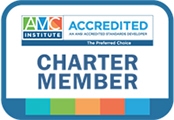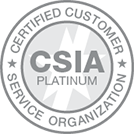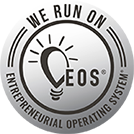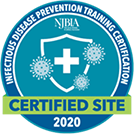Running is my passion and I have long been uber-inspired by ultra-marathoners – those crazy body geniuses that push themselves to run anything further than the standard 26.2 mile marathon, even going as far as 50 or 100 miles – on their own two feet!
While I have not done such a trek myself (yet!), it strikes me that committing your body to tackle such an undertaking is much the same as running an association. While planning and executing a volunteer appreciation dinner might equate to a 5k road race and a year’s worth of work that you put into your annual conference may feel like a marathon – the long term commitment and sacrifice of successfully managing a group is certainly an ultra-feat.

Creating a training plan to map out the distances, timing, and pace you need to prepare for a long race is much the same as executing a strategic planning session with your board. Both require significant thought, preparation, documentation and the willingness to ultimately put in the work you’ve mapped out for yourself.
Tweaking your training plan and logging your progress toward your goals as you go is a similar process to documenting your action map once a strategic plan has been agreed upon by the governing body. This ongoing work is what needs to be done to ensure future success. Just because something feels and sounds like a good idea at the planning stage doesn’t mean it will actually play out that way. Continually evaluating your actions and activities as well as whether and how the outcomes are transpiring ensures that the plan can be modified to stay on track. This monitoring, evaluating, and modifying step is crucial to success.
Putting in the training miles according to your continually managed plan equates to getting the right people in the right seats, collaboratively assigning appropriate goals, and managing those individuals to success. Ultimate goals cannot be achieved without the commitment to shepherd your entire staff team and volunteer members through the potentially painful process of actually doing the work.
We’ve all heard the saying “no pain, no gain” – isn’t this true of all things? Running long miles to train your body for a strong race finish breaks down muscle fibers, makes your joints take a beating and increases the capacity of your lungs. While painful in the short term, the long term gain is stronger muscles and legs, and lungs that can carry your body the distance.
Getting the right people in the right seats and on the right path is also sometimes a painful process. Harmonizing the vision, expertise, and contributions of your volunteer leaders with the execution abilities of your staff is a delicate balancing act that requires the stamina of a well-trained leader.
Training for races give you a real life feel for what you can expect to experience when you line up for the ultra-event. The everyday work of executing your events and ongoing programming activities as well as regular communication with your board members and volunteers is the same thing. Living the daily grind of handling your president, executing the board’s strategic vision, managing the staff, running committee meetings, reviewing financials, and learning from each interaction sets the stage for iterative learning opportunities, all of which should propel you to continual growth and success within your organization.
Whew – I feel like I ran 50 miles just thinking about all that! What metaphors have resonated with you as you successfully manage your association? Comment and share what has worked for you!




